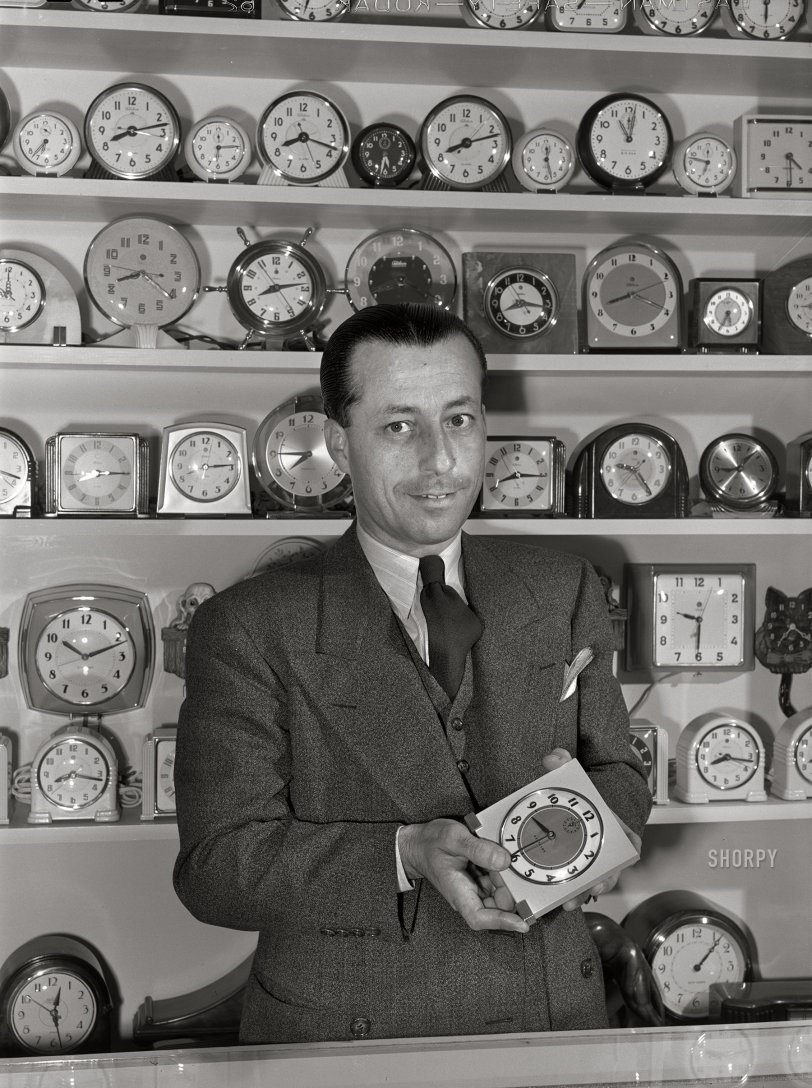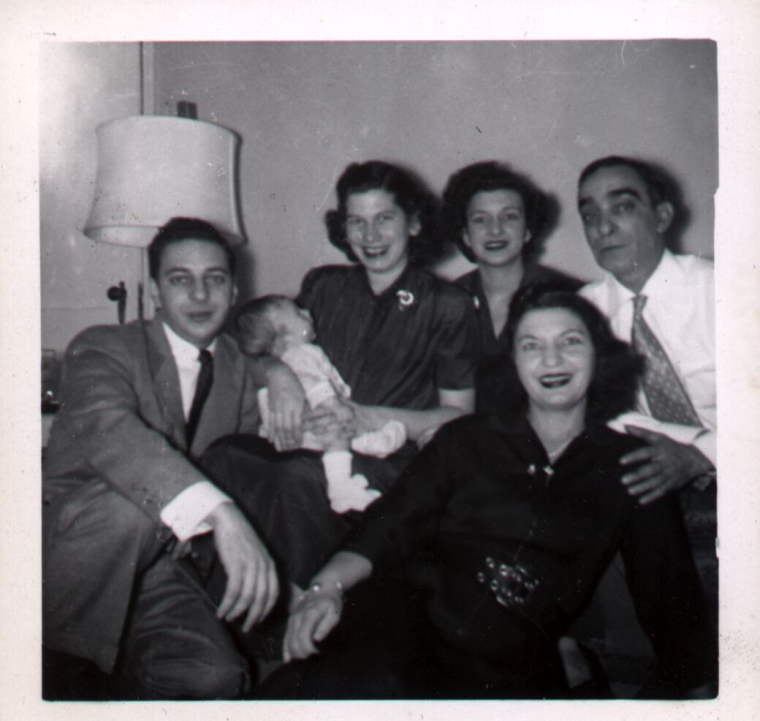


Framed or unframed, desk size to sofa size, printed by us in Arizona and Alabama since 2007. Explore now.
Shorpy is funded by you. Patreon contributors get an ad-free experience.
Learn more.

- Freeze Frame
- Texas Flyer wanted
- Just a Year Too Soon
- WWII -- Replacing men with women at the railroad crossing.
- Yes, Icing
- You kids drive me nuts!
- NOT An Easy Job
- I wonder
- Just add window boxes
- Icing Platform?
- Indiana Harbor Belt abides
- Freezing haze
- Corrections (for those who care)
- C&NW at Nelson
- Fallen Flags
- A dangerous job made worse
- Water Stop
- Passenger trains have right of way over freights?
- Coal
- Never ceases to amaze me.
- Still chuggin' (in model form)
- Great shot
- Westerly Breeze
- For the men, a trapeze
- Tickled
- Sense of loneliness ...
- 2 cents
- Charm City
- What an Outrage
- Brighton Park
Print Emporium
Spring Forward: 1942

April 1942. "Portuguese-Americans in California. Mr. H. Ormond, who is a leading jeweler in San Leandro, came to the United States from the Azores Islands 23 years ago when he was 17 years old. For three years he lived in San Francisco and then moved to Oakland, where he worked in a jewelry store for ten years. In 1932 he opened his own store in San Leandro. Mr. Ormond and his wife have worked long hours to build their establishment and now hold a respected position in the social and business life of San Leandro. Mr. Ormond said, 'I received my education as a boy in the Azores but I have found that all the things that I learned there as well as the principles of honesty and integrity and thrift and industry that my parents taught me have served me well in my adopted country. While I now speak a different language, all the principles of life in the United States and the Azores are the same'." Photo by Russell Lee for the Foreign Information Service of the U.S. Office of Coordinator of Information. View full size.
A woof not a scream
The clocks at both of Mr. Ormond's shoulders look like puppy clocks to me. And one of my aunts had the cat clock with the tick-tock tail.
The time of his life
Yesterday I ate a clock.
It was very time consuming but I went back for seconds.
Scream Alarm
Is that an Edvard Munch clock just over Mr. Ormond's right shoulder?
Wondering how that alarm might sound.
Daylight Savings EYAHHHHHHH!
Love the clocks, love the photo, but thinking of all those clocks and Daylight Savings is giving me acid reflux. And I thought **I** had a lot of clocks to change!
Enough to Wind Him Up
Daylight Savings days were probably not Mr. Ormond's favorite days of the year.
[DST was instituted 365 days a year during the war, so Mr. O got a reprieve. - Dave]
The Azores
This one has me all nostalgic this morning. My wonderful grandfather, like Mr. Ormand here, came to the US from the Azores. He arrived as a stowaway in Key West circa 1915, worked his way up the coast to his relatives in New Bedford, Mass. and then fibbed his way (he was about 16) into the US Army. He was gassed and wounded in The Battle of Belleau Wood, met my German grandmother as part of the occupation in 1918 and eventually made his life in Brooklyn as a welder & pipefitter in the Brooklyn Navy Yard. The pic I've upload shows my Mom holding me in early 1953. My Dad is on the left, my grandfather on the right. The other two ladies are my aunts, my fathers sisters.
Seems that Mr. Ormond, like my Pop, found a place here and prospered. Part of our unique blended culture.

Tik-Tok-Tik-Tok
Try to sleep with one of those in the room. Let's just say they keep you up until you surely miss the alarm.
Ask me how I know.
Assignment: nationalities in California
It's astonishing how a Shorpy photo of a man holding a clock in a town outside San Francisco evokes complex but little-known international politics during World War II.
Lee took this photo the same month as the one of Japanese 'evacuees' that recently sparked spirited commentary on Shorpy. The 'Foreign Information Service of the U.S. Office of Coordinator of Information' was in the same alphabet soup as the Office of War Information that is credited on Lee's photo of Japanese-Americans.
It would be interesting to know the specifics of Lee's assignment during April 1942, though one motive is not difficult to figure. Portuguese-Americans were particularly important because neutral Portugal was one of the few places in continental Europe not under strong German influence. (Dictator Salazar ran a government not unlike Spain's, but disliked Franco's ties to the Axis.) That made Portugal a key destination for refugees and a jumping-off place for the Western Hemisphere. (Characters in 'Casablanca' are trying to get there.)
Mr. Ormond's origin in the Azores is particularly noteworthy because both sides were eying the strategic location of that archipelago in the mid-Atlantic. While maintaining neutrality into 1944, Salazar's government gradually increased the Allies' access to the Azores, something that continued into the Cold War--and today.
























On Shorpy:
Today’s Top 5